Tag: Home Theater

10 Steps to Set Up A Professional Home Theater (part 1)
February 6, 2020
To design a home cinema, you need to have in-depth knowledge of the design, know how to organize things as well as make the smartest choice. A few tips to building a professional home theater will help you feel better in the first step.
1. Find an appropriate area in the house
Choose an appropriate space and can bring the highest projection effect in your home. Remember that if the cinema room is shared with other activities, the entertainment experience will definitely be reduced. For example, the kitchen will be mixed with the noise of the cooking process, the smell of food invading. And the living room will be very difficult to control the light and even the noise between family members. All of this can affect your entertainment experience.
2. Remodeling the ordinary room into a professional movie room
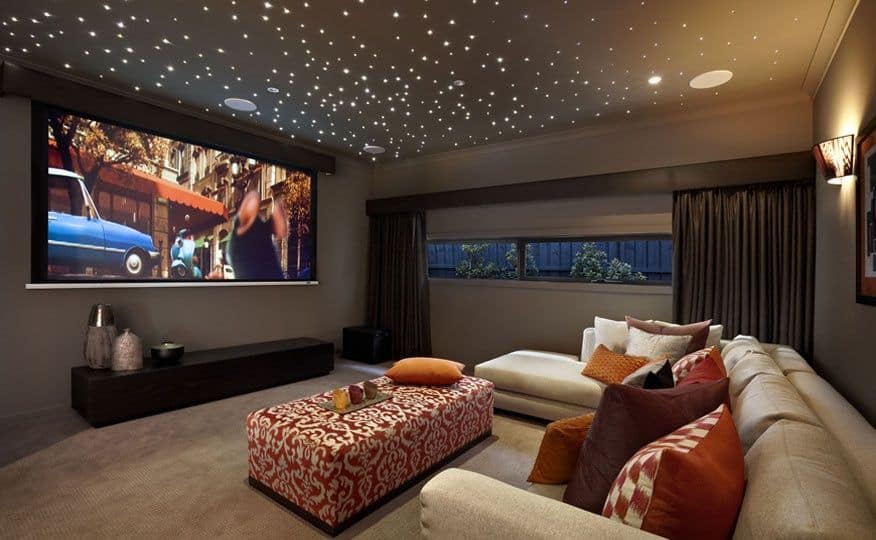
Repairing a door room such as installing floors, painting walls or installing ceilings is the next thing you need to do to set up a professional home cinema room. In addition, you need to pay attention to the degree of outside light control and the surface area used to install a projection screen or directly onto a wall (considering the use of a projector).
3. Control of ambient light
Ambient light means light from outside the projection room such as from other rooms or light through a window. It may affect the quality of the image projected on the screen. So, you still need to control the light in this room.
On the projector side, you’ll need a high-brightness video projector if you intend to use it in a room with lighting or unable to control the light. But the best way to deal with ambient light is to simply block it from before it starts. You should choose a space with low light such as a basement or windowless room. If you can’t do this, limit the light to the curtains and turn off the electricity
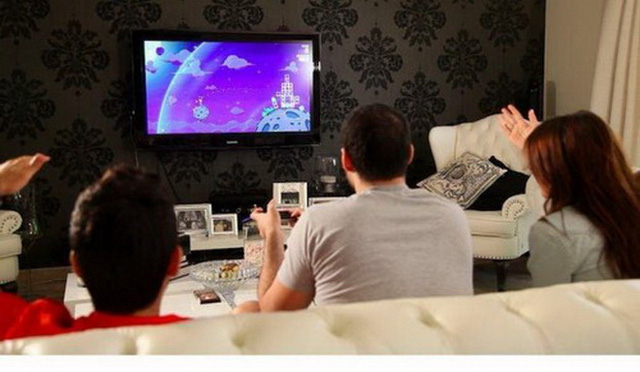
Home Theater: How to Choose The Best Projector
December 26, 2019
The central and most important central equipment for a home theater is a projector. Unlike office projectors, home projectors usually have a wide aspect ratio of 16: 9 and are designed specifically for movie projection.
When deciding on a projector, you should not rely too much on the specifications given by the manufacturer as they tend to be overblown to reality. It’s best to look for information about the machine through the reviews of experts, or from the tech community, and then watch the demo of the machine directly at the shop selling projectors.
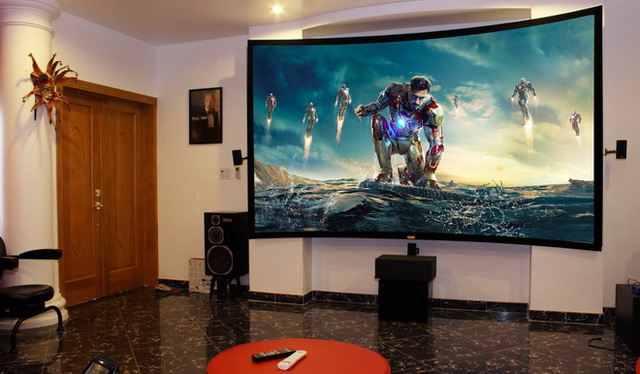
Usually, we can easily distinguish home projectors from office projectors. Office projectors often have a high brightness of over 3,000 lumens due to being used in a bright office environment. However, the contrast of the device is quite low, below 3000: 1. Whereas the projectors have lower brightness because they are used mainly in dark rooms, but give very realistic colors and tens of thousands of contrast.
With the development of technology, the quality of home cinema projectors has been constantly improved, and besides, the price has been pushed down to an unprecedented affordable level.
With an investment under $ 1300, you can consider already popular models such as Optoma HD25LV, BenQ W1070 or ViewSonic 7820HD. These projectors all have Full-HD resolution and are equipped with 3D projection feature.
With a higher investment of $ 2100, you can consider high-end models such as Epson TW8100, Optoma HD8300, BenQ W7000 or Panasonic PT AE8000. Of course at this price, the quality can satisfy even the most demanding audience.
A major concern of projector users is the lifetime of the projector lamp. This issue is currently being addressed by projector vendors. And the lamp life has been increased to over 5,000 projection hours. This means you can enjoy thousands of movies without having to consider replacing the light bulbs. The price of genuine light bulbs currently ranges from 200 to 300 USD depending on the company.
As for the camera body, carriers usually offer a 2-year warranty, especially up to 3 years. In order to be assured of using the device, the advice given to users is to choose reputable suppliers and have a good after-sales warranty to buy the machine.
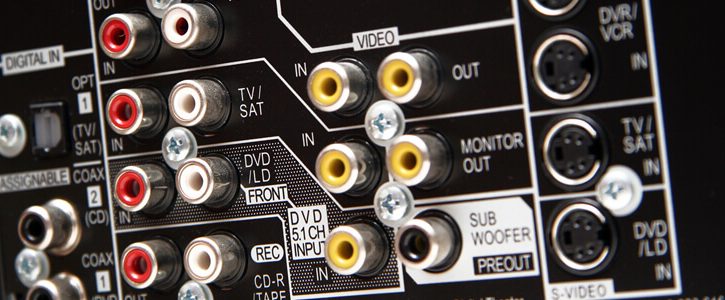
Basic Connections When Installing a Home Theater System
January 12, 2019
How to own a perfect home theater system? In order to do this, you must prepare the appropriate and varied connection ports. Here are some basic connections you need to consider if you want to install a home theater system.
Connections to consider when buying a home theater system are HDMI, USB, MHL and other wireless connections that are integrated by manufacturers.
First of all, HDMI is often the most important connection port to pay attention to when selecting a home theater. Normally for systems that support Blu-ray standard, there will be at least 1 HDMI port and 1 output port for TV. However, users should select sound systems with 2 or more HDMI ports.

Through the USB connection, users can play music and images. Some systems support reading HD movie formats such as AVCHD, DIVX, WMV and MKV from external hard drives via USB. Some formats compress music from CDs into MP3 files and copy directly to storage devices via USB port.
Current audio-visual devices also need to add another connection standard, MHL (Mobile High Definition Link). This connection standard helps to transmit sound and images from a device that emits an external monitor.
Many home theater systems also include wireless connectivity such as Wi-Fi connectivity depending on price range. The advantage of this connection is that users can access the content stored in computers connected to the same network without the need to invest in discrete HD playback devices.
Not only that, without getting too many wires, users can choose the staging units using wireless speakers and wireless subwoofer. However, there are also many experts that the quality of these connected devices cannot be compared with those of traditional speaker wiring.
If you carefully prepare all of the above basic connection ports, enjoying your home theater movies will be much more convenient.
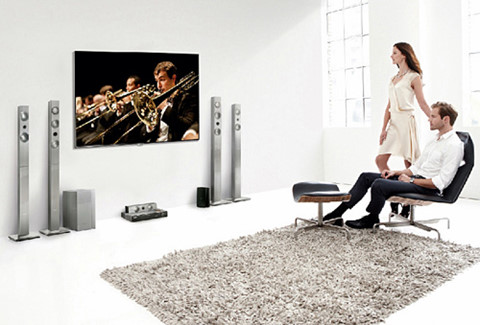
Choose To Buy The Right Type of ‘Home Theater’
January 4, 2019
It’s time we don’t need to go to the cinema and can enjoy cinematic productions with spectacular space and lively surround sound systems with family members by taking a set home immediately ” Home Theater “.
A standard “home theater” will usually include: 2 side speakers (front), 2 surround speakers, 1 center speaker (center) and 1 subwoofer for system 5.1, or customizable and extends into 7.1 with 4 surround speakers.
If you have decided to go home with Home Theater, you should choose to buy the “set” speaker with the same manufacturer to minimize the effort to coordinate, refine the parameters, to optimize the synchronization of tones between Speaker in the system and maximize the effect of movies and music.
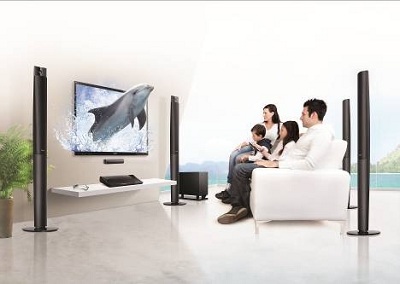
Customize options with space
In the living room / entertainment room with large space, we can use column speakers, in small rooms can use wallshelf speakers. As for the family living room of less than 30m2, the most suitable option for you is the type of loudspeaker with aesthetic design, easily placed anywhere at the “sweet” point of the sound without being too stunned. must drill the wall to hang up.
Material
According to the practical experience of experts, the paper film speaker will give smooth but poorly detailed sound, the metal film speaker will reproduce the sharp sound, the ceramic screen will give very good and balanced sound, often Used in high-end speaker lines. Therefore, the choice of speakers made of any material is very important, depending on the need to enjoy, the musical taste of each person, however, for the purpose of using for home entertainment, you should choose I have a kind of sound that is detailed, accurate, clear, high dynamic.
Equipping yourself with the basic knowledge will help you confidently “pick up home” a “home theater” completely worthy of the budget and effort the homeowners have spent and bring the experience ” audiovisual “perfect for all family members.